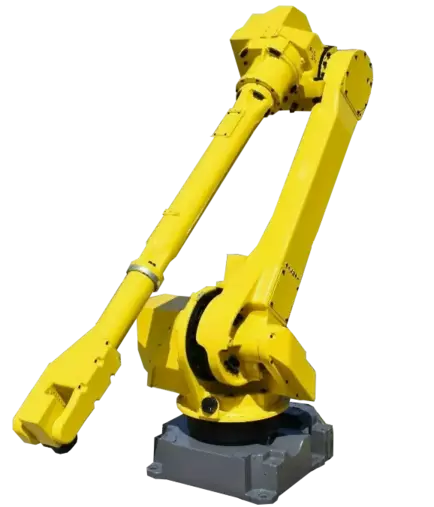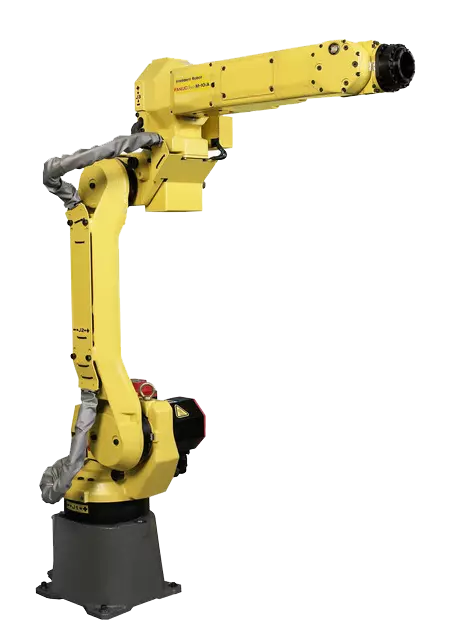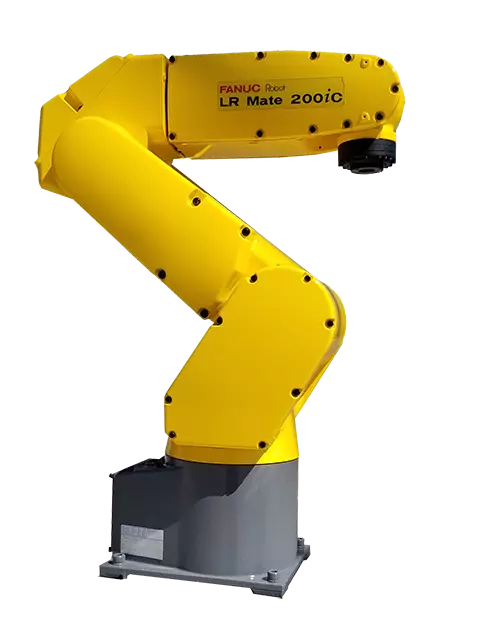The Main Components of an Industrial Robot
Industrial robots are powerful machines capable of performing numerous manufacturing applications, ranging from simple to complex. Robots like the FANUC R-2000ib or the ABB IRB 6640 can function automatically with the capability to adapt to changes during operation. Robots have become an integral part of manufacturing as they have taken over dangerous and tedious jobs from humans while also improving upon productivity and quality. The design of industrial robots makes them capable of performing human-like functions. This design consists of five main components which are the controller, sensors, robot arm, end effector, and drive.
Controller
The robot controller is a computer that is connected to the robot and serves as its “brain.” All industrial robots need a controller in order to be able to operate. For example, the Motoman MH50 is paired with a Motoman DX100 for its controller, while the FANUC Lr Mate 200ic works with a R-30ia controller. The controller is used to instruct the robot on how to operate through code, which is more commonly referred to as a program. Robotic programs are inputted into a controller through the use of a teach pendant. Once the program is in putted to the controller, it will send the program information to the robot’s CPU (central processing unit). The CPU is a small chip located within the robot that allows the robot to process and run the program.Sensors
Sensors provide industrial robots with feedback about their workspace. The most common types of sensors include vision systems and microphones as these act as the eyes and ears of a robot. Sensors allow robots to dynamically adapt to their work environment by sending signals to the robot’s CPU.Robot Arm
You may have noticed the majority of industrial robots feature very similar builds, in that they have a robot arm. An industrial robot arm is used to position the robot’s end effector. Robot arms can vary in size and shape, but in general they are designed to mimic a human arm with shoulder, elbow, and wrist like parts. These parts are what allow robots to position end effectors correctly in order to perform an application. The parts of a robot arm each serve as an individual degree of freedom or axis. Most industrial robots have 6 axes for a range of motion that is similar to a human’s.End Effector
End effectors are attached to the end of a robot arm and act as the robot’s hand. These are commonly referred to as end of arm tooling (EOAT) and vary depending upon the application type. For example, the FANUC Arc Mate 100ic can be integrated with a welding torch and welding supply, such as the ,Lincoln Powerwave R350 to complete arc welding applications. While a robot such as the FANUC M-16ib, may be fitted with a gripper for the EOAT in order to manipulate parts to assemble an object. Some robots, like the FANUC M-710ic, can be fitted with multiple end effectors that can be automatically changed with the use of a tool changer, allowing the robot to complete several different types of applications.Drive
The drive of an industrial robot is the engine or motor which moves the different robot parts around. Robot drives are typically powered hydraulically, electrically, or pneumatically. Hydraulic drives can provide increased power and speed, while electric drives tend to be less powerful. Smaller robots typically utilize pneumatic drives.Robots Done Right is the place to start when it comes to used robots. Contact us if you are interested in buying or selling your used robot.




